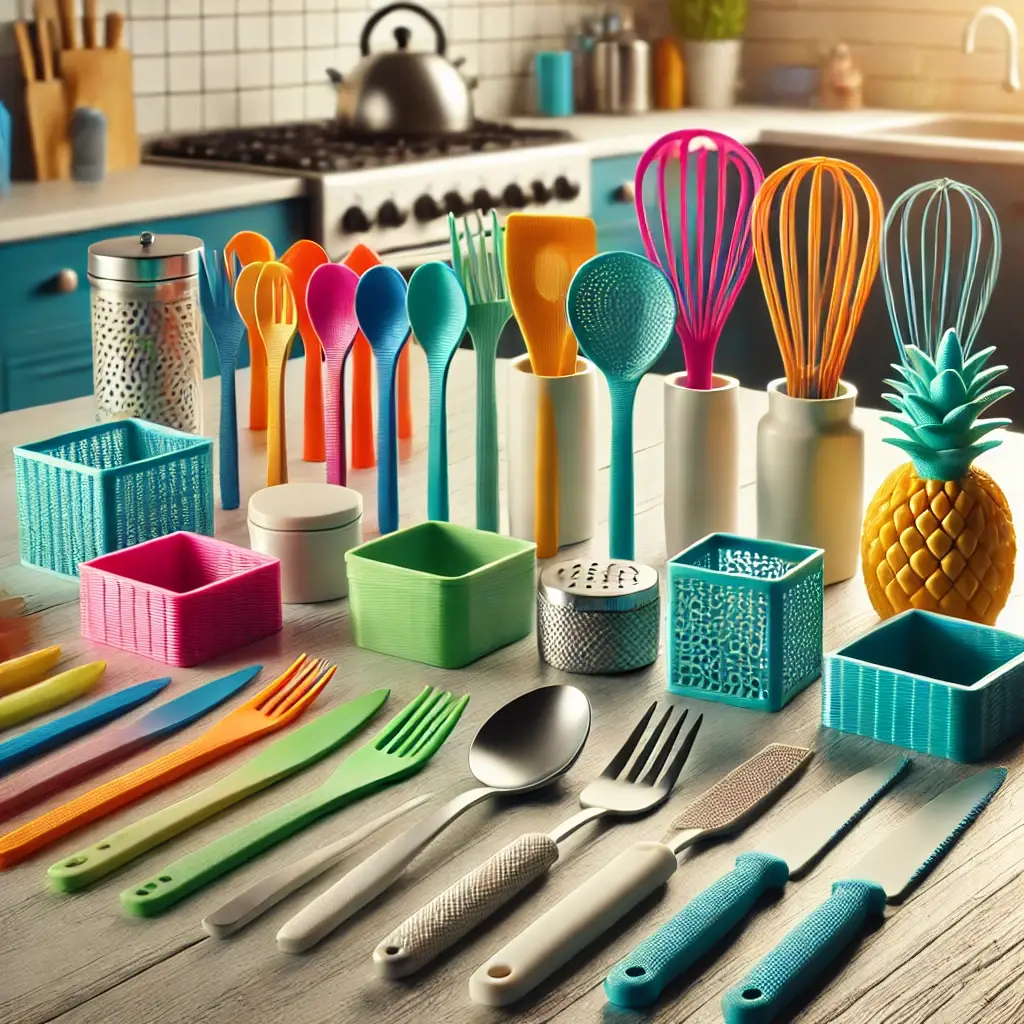Food-Safe 3D Printer Filament has become essential for anyone looking to create 3D-printed items that will come into contact with food. As 3D printing advances, more people are asking whether they can safely use their 3D printers to create food-related items. The answer is yes, but it requires careful selection of the right filament and following best practices. This guide will walk you through everything you need to know about choosing and using food-safe 3D printer filament.
What is Food-Safe 3D Printer Filament?
Food-safe 3D printer filaments are specifically designed to be safe for food contact. These filaments are made from non-toxic materials that do not release harmful chemicals or leach toxins when they come into contact with food or when exposed to heat. However, just because a filament is labeled “food-safe,” it doesn’t automatically make the printed object safe for food contact. The entire 3D printing process, including post-processing, ensures the final product is genuinely food-safe.

Popular Types of Food-Safe 3D Printer Filament
Several options are available when choosing a food-safe 3D printer filament. Below are the most popular types:
- PLA (Polylactic Acid) Filament
PLA is a biodegradable thermoplastic derived from renewable resources like corn starch or sugarcane. It’s generally considered food-safe, especially when labeled as food-grade PLA. PLA is also easy to print with and widely available, making it a popular choice for food-safe applications. - PLA+ Filament
PLA+ offers improved strength and durability over standard PLA. While it retains the food-safe qualities of regular PLA, it’s often used for items that need to withstand more wear and tear. - PETG (Polyethylene Terephthalate Glycol) Filament
PETG is a durable, impact-resistant filament commonly used in the food packaging industry. It has a higher melting point than PLA, making it suitable for items that may come into contact with hot foods. PETG’s lower porosity than PLA also reduces the risk of bacteria growth. - PP (Polypropylene) Filament
Polypropylene is widely used in household food containers due to its excellent chemical resistance. It’s lightweight, flexible, and has a high melting point, making it ideal for food-safe prints. However, due to its tendency to warp, it can be more challenging to print with. - Nylon Filament
Nylon is strong and flexible, making it a great choice for kitchen utensils and other food-contact items. It’s durable, heat-resistant, and generally food-safe, but like PP, it may require specific printing conditions to avoid warping.
Best Practices for Using Food-Safe 3D Printer Filament
Using food-safe 3D printer filament correctly is crucial for ensuring the safety of the final product. Follow these best practices:
- Select a Food-Safe Filament:
Always choose a food-safe filament. This ensures the material is free from harmful additives. - Use a Stainless Steel Nozzle:
Brass nozzles can contain lead, which may contaminate your prints. A stainless steel nozzle is a safer choice for food-contact items. - Post-Processing Your Prints:
Smooth the surface of your prints to reduce the risk of bacteria growth in tiny crevices. Consider applying a food-safe coating to seal the surface. - Use a Dedicated Printer:
If possible, dedicate a specific 3D printer for food-safe projects to avoid cross-contamination with non-food-safe materials. - Maintain Regular Cleaning:
Regularly clean your 3D printer to ensure no residual material or contaminants affect your prints.

Conclusion
Food-safe 3D printer filament opens up exciting possibilities for creating custom kitchen tools, food containers, and more. However, safety must always be a priority when making items that will come into contact with food. By selecting the right materials and following best practices, you can create functional and safe 3D-printed items that you can confidently use in your kitchen.
Explore the wide range of food-safe 3D printer filaments available at @iiidmaxfilament and start your next kitchen project today!
